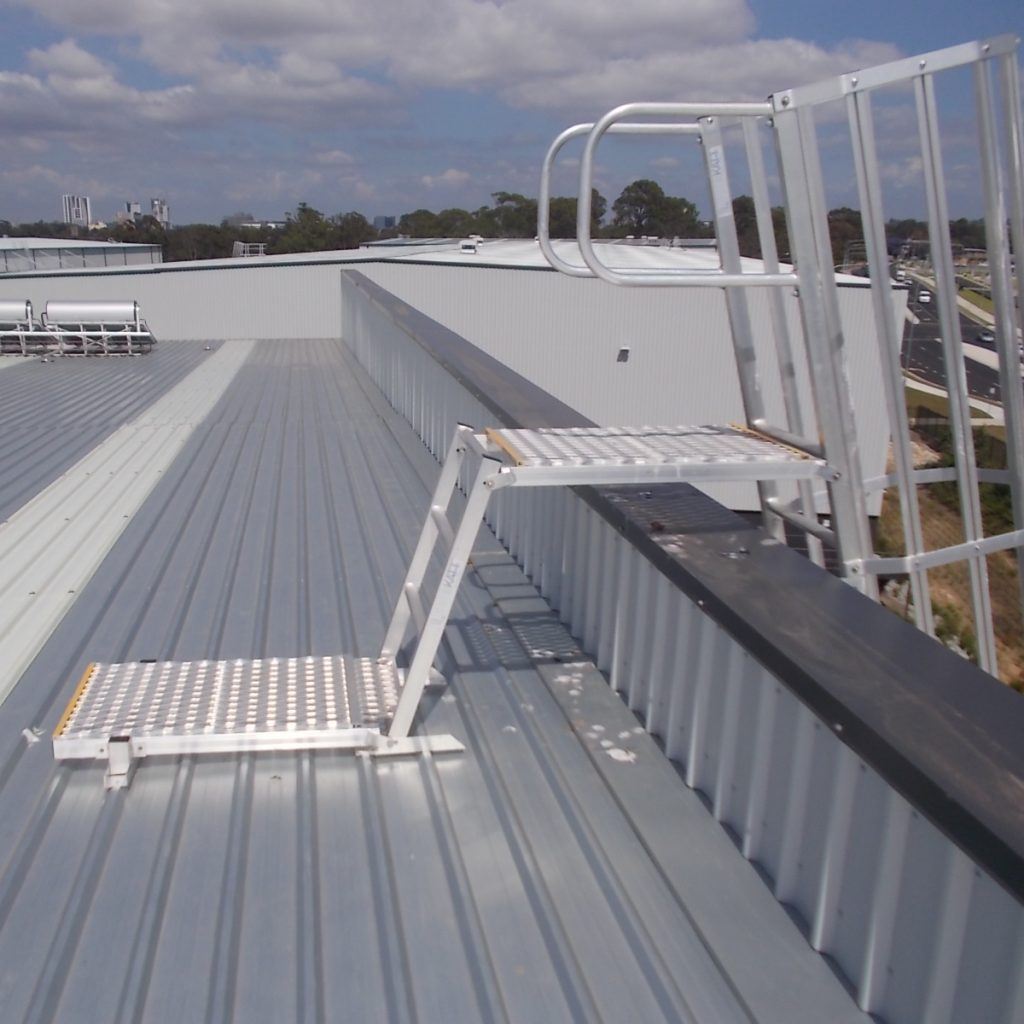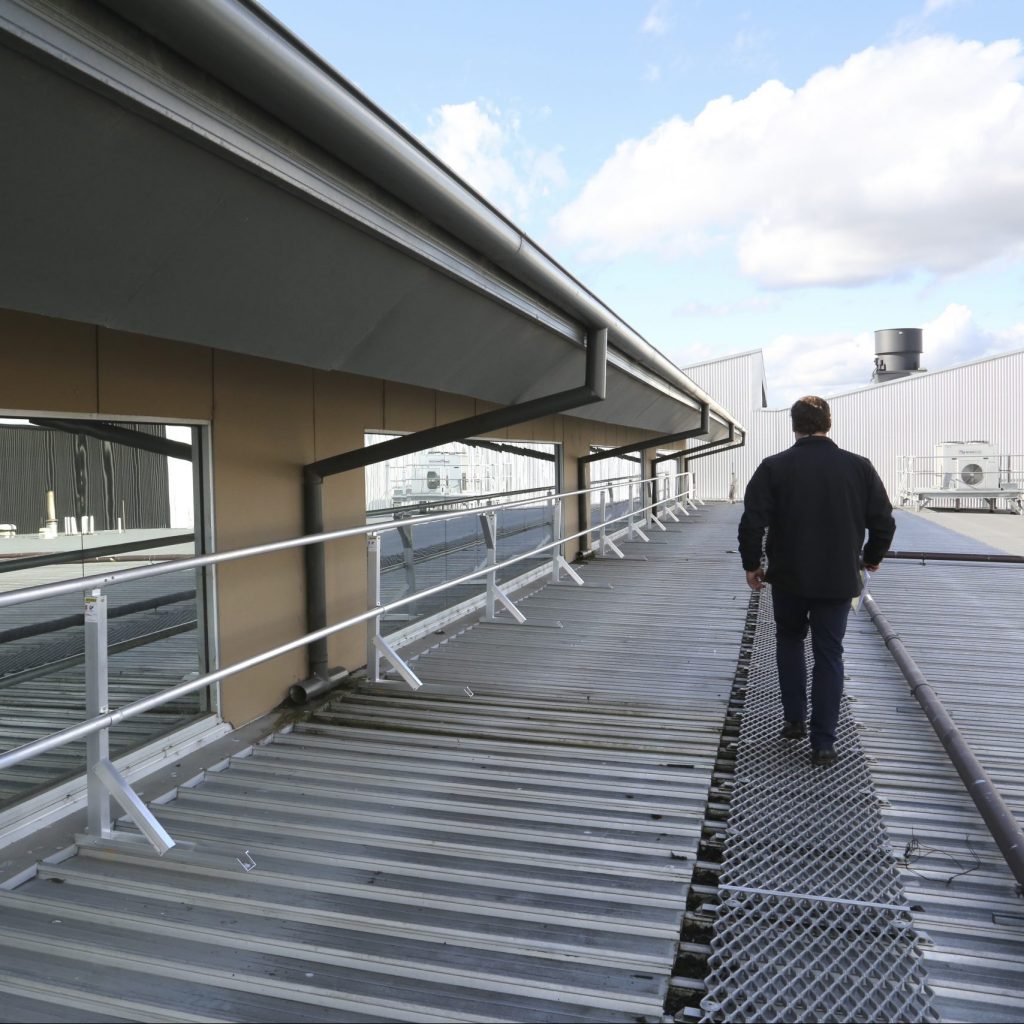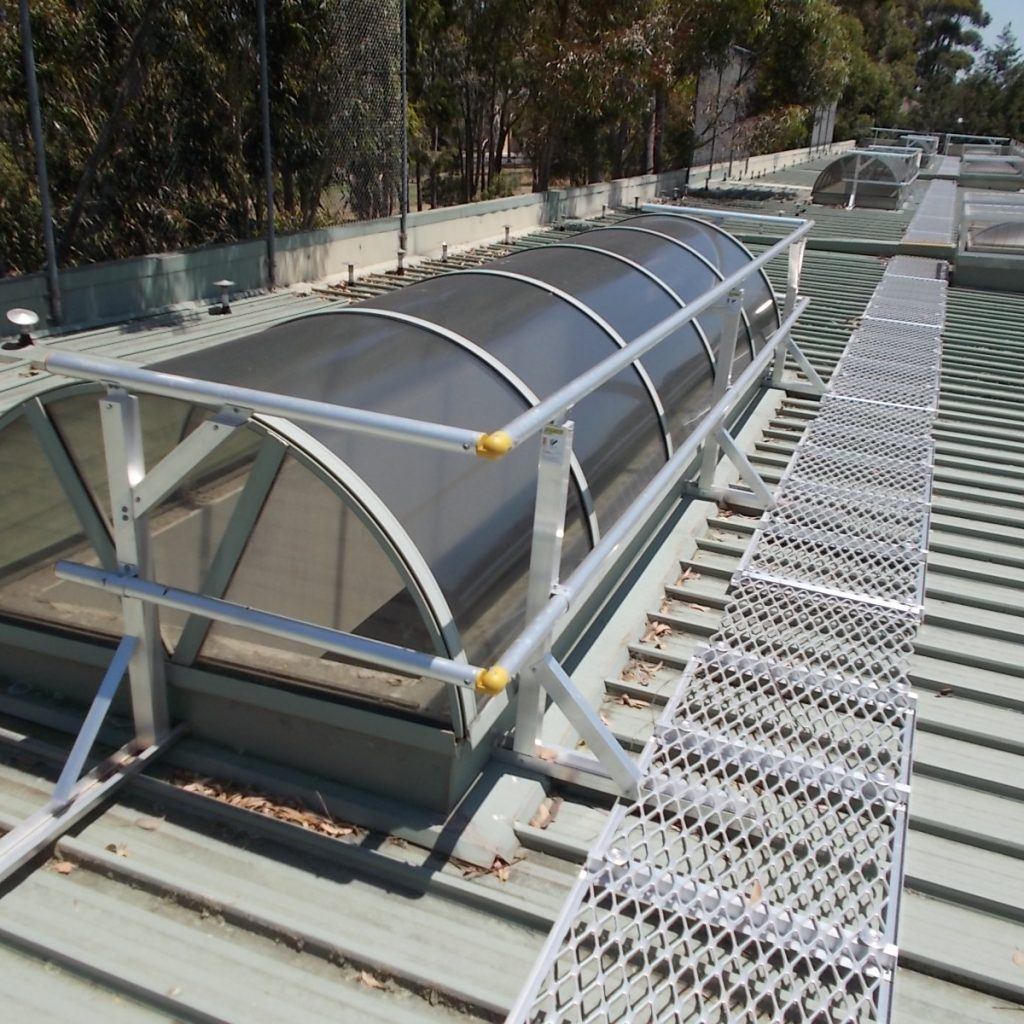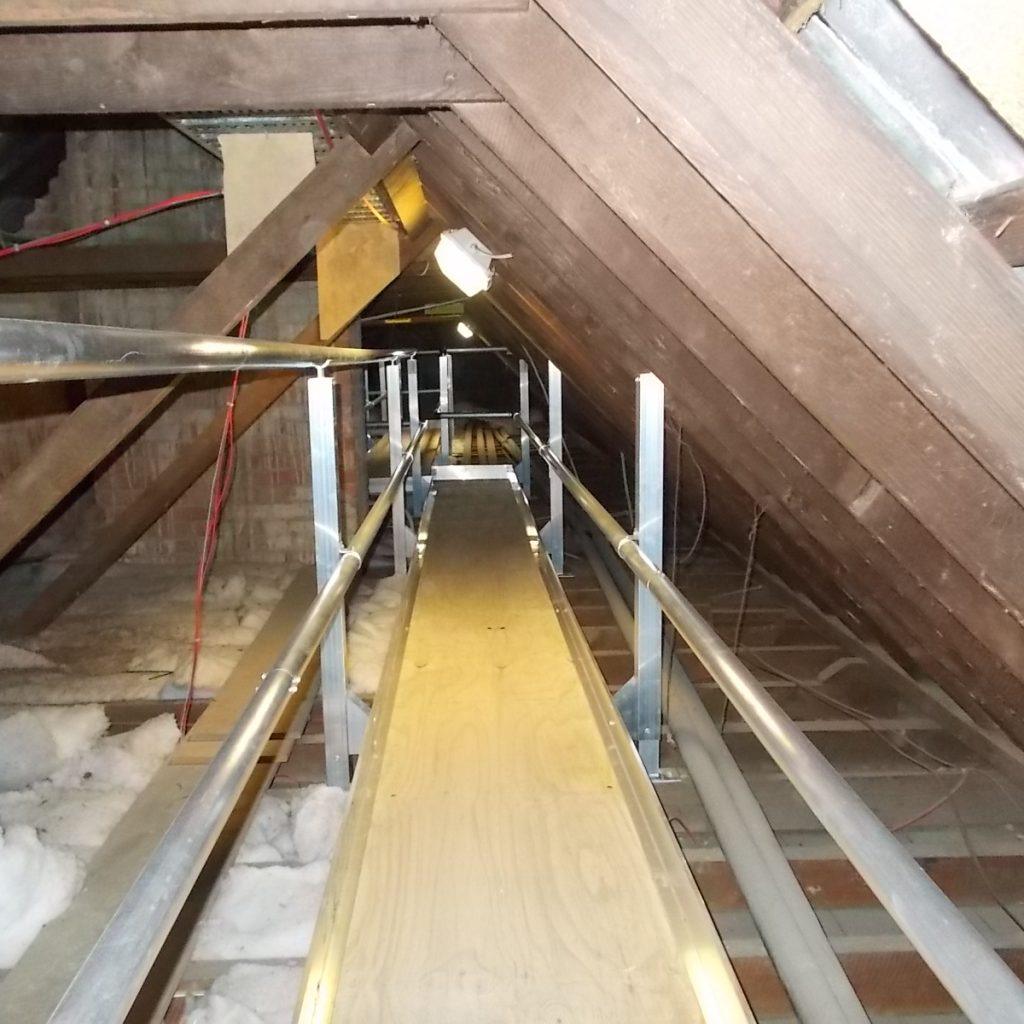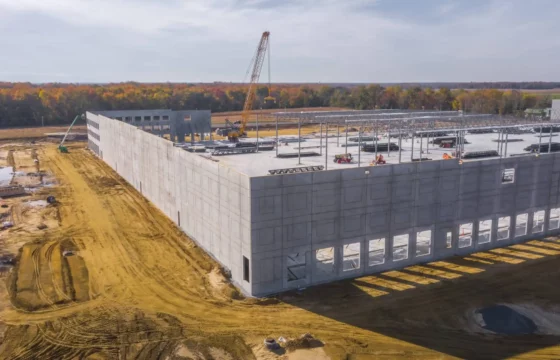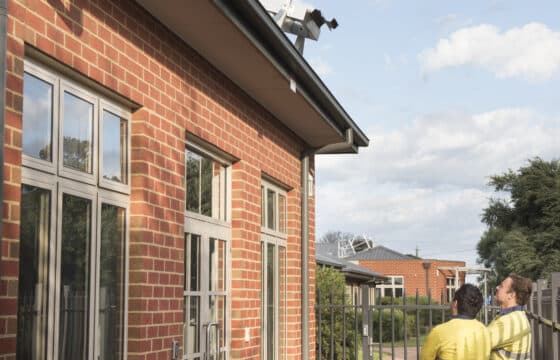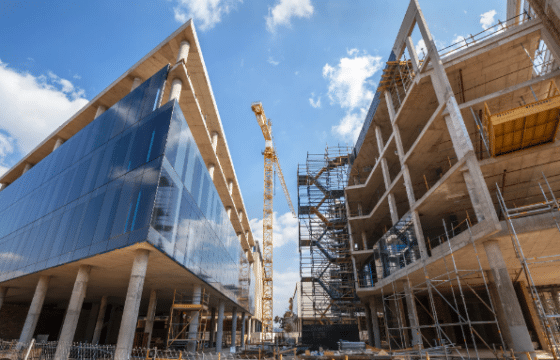5 steps to prevent a fall through
The Workplace Health & Safety Regulator has recently issued an alert on brittle surfaces, following a worker falling through a roof.
The top 5 steps to take when it comes to preventing falls through brittle surfaces are:
1. Inspect the workplace; identify and list tasks to be done near brittle surfaces.
Common surfaces to look out for are fibreglass sheeting (aka “Laser light” or “alsynite”), glass or plastic skylights, plasterboard, asbestos sheets, ceiling tiles, rusted and compromised roofs or floors.
Maintenance tasks usually done in proximity may be air-conditioning/HVAC maintenance, gutter cleaning, general roof maintenance and cleaning extraction fans amongst other things.
These surfaces may be found inside ceiling spaces, on rooftops or awnings.
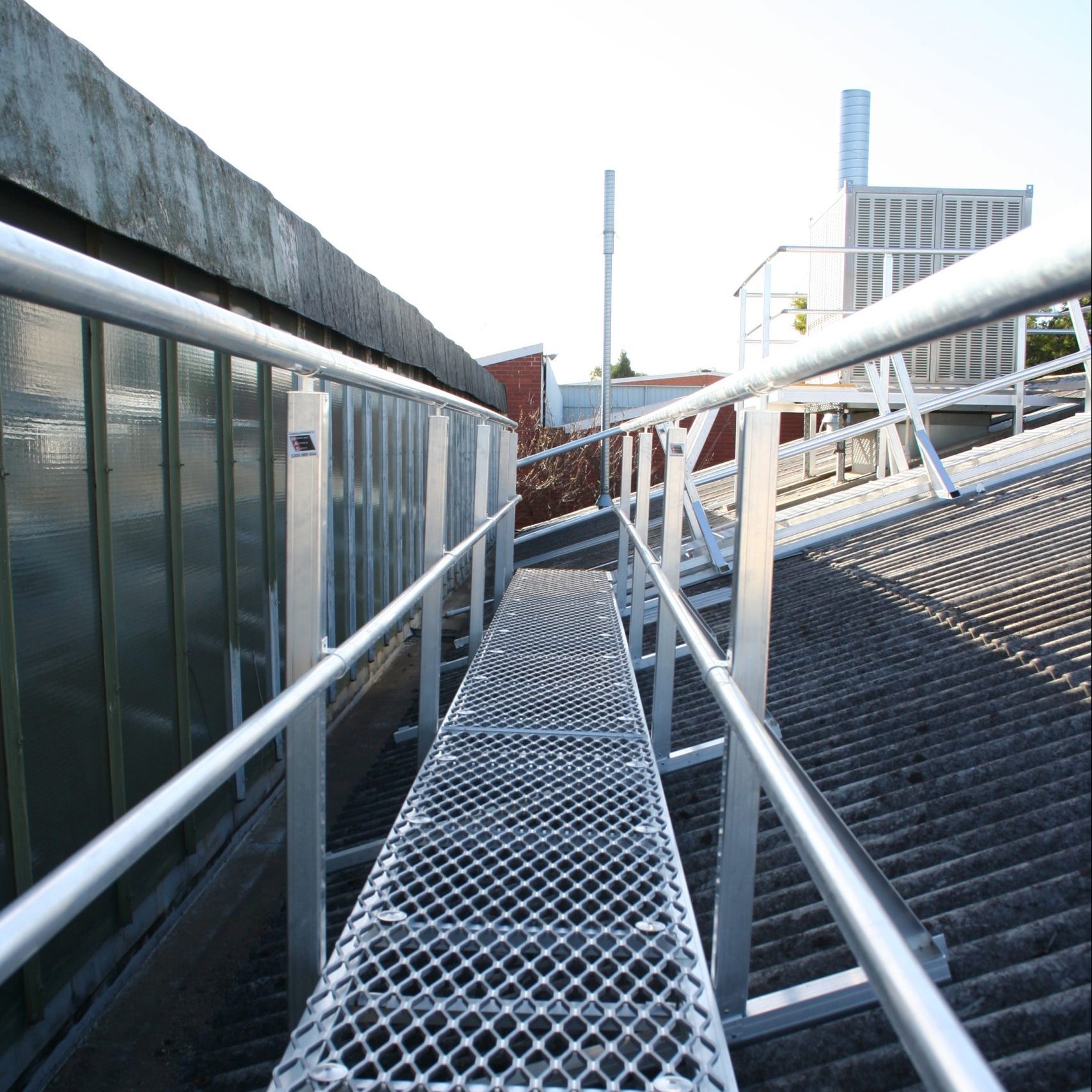
2. Risk assess those tasks and identify control measures following the “Falls” Hierarchy of Controls.
Risk rating the hazards using a matrix of probability versus likelihood, will provide you with a tool to prioritise remedial work and risk mitigation. At the same time, identify control measures that are practical and can be quickly implemented.
Presenting a list of problems without implementable and costed solutions will create frustration and slow down the process so make sure that equipment and processes are practical and line up with your workers’ skillset.
3. Implement controls straight away.
If it’s unsafe, then steps should be taken immediately. This may be as simple as restricting access to a work area and using temporary measures and labour with particular expertise. For example, scaffolding can be quickly installed. Anchor points can be installed and specialized rope access workers engaged to do the maintenance work.
Longer-term, permanent solutions like guard railing (handrails), platforms, static lines and permanent systems can be provided, which are more suitable for your regular workforce.
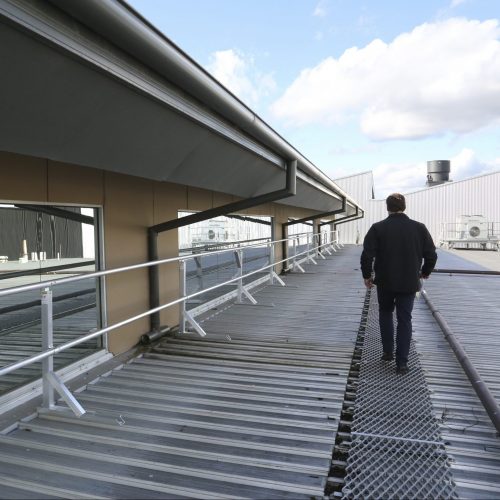
4. Monitor the control measures.
Once installed, induct the workers to site and share handover manuals and work instruction with them that is site-specific. Monitor the workers and make sure they’re complying with their SWMS and using the equipment correctly.
5. Inspect your workplace to ensure the equipment and procedures remain relevant and compliant.
Certain types of equipment require regular inspection and a register maintained. Each jurisdiction has its own requirements which vary from a minimum of 6 months to a minimum of 12 months.
Sites change: new air-conditioning and fire safety equipment gets installed and decommissioned as tenants come and go; trees grow and leaves fall. Things change, so it is best to inspect the working environment routinely to make sure the site conditions and equipment are suitable and in working order.
If you want to tackle this yourself, you’ll need a practical understanding of standards and codes including AS1657, Compliance Code for Prevention of Falls, National Code of Practice for the Prevention of Falls in the Workplace, AS/NZS5532, AS/NZS1891 series, AS/NZS1892, Model Code of Practise Managing Risks of Falls at Workplaces, Compliance Code for Prevention of Falls and a practical understanding of what equipment can be installed at your workplace.
If that seems complicated and onerous, Workplace Access & Safety can assist with a site inspection and provide advice to set you on the right track to compliance.
Call us now on 1300 552 984 or enter below.
We would love to hear from you! Please fill out this form and we will get in touch with you shortly.

